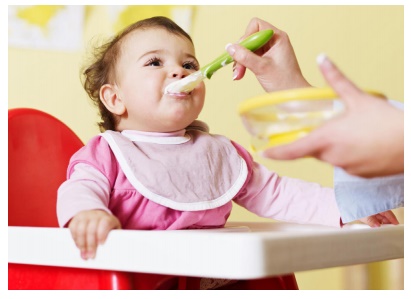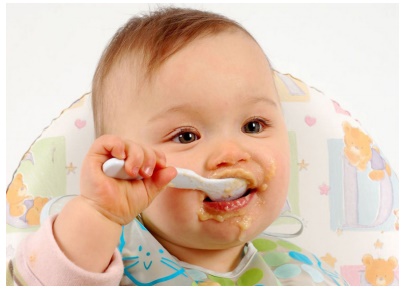Child Health - Definition, Time, Characteristics, Techniques, safe - Weaning | 12th Nursing : Chapter 5 : Child Health Nursing
Chapter: 12th Nursing : Chapter 5 : Child Health Nursing
Weaning
Weaning
Weaning is giving family foods in addition to breast milk. Family
foods are foods that the rest of the family normally eat, can give babies all
the nourishment they need without any additional cost. Weaning is a gradual
process by which the infant
becomes accustomed to
the adult diet. The weaning period is the most crucial period in the child’s
development. Weaning, if not done properly, lead to diarrhea and malnutrition.

Definition of Weaning
Weaning is the gradual replacement of breastfeeding with other
foods.Weaning is the process by which a baby slowly gets used to eating family
or adult foods and relies less and less on breast milk.

Time of weaning
It is a gradual process starting around the age of 6 months,
because the mother’s milk alone is not sufficient to sustain growth beyond 6
months.
Supplementary foods
During weaning, suitable foods rich in protein and other nutrients
are given to the child. These foods are called supplementary foods. These are
usually cow’s milk, fruit juice, soft cooked rice, dhal, vegetables and egg
yolk. As far as possible, locally available foods should be used in weaning the
child. The weaning/ supplementary foods do not replace breastmilk, they
complement it. As the baby gets older it needs more food to grow and stay
healthy.
Characteristics of ideal weaning foods
High in energy
·
Easy to digest
·
Low in bulk and
viscosity (not too thick)
· Fresh and clean
·
Inexpensive and easy to
prepare
·
Not too highly seasoned
Techniques of weaning
·
Wash hand thoroughly
with soap before preparation of weaning foods.
·
Introduce one food at a
time
·
Let the baby get used to
one food for a few days before introducing another.
·
Start by giving one or
two teaspoons and gradually increase the quantity
·
Give food in addition to
regular breast feeds.
·
Do not use a feeding
bottle.
·
Slowly increase the
number of meals and the amount of food given.
·
Feed babies using a
clean cup and spoon.
·
Do not add water to the
weaning food.
·
Encourage the child to
hold the food
·
Encourage eating on its
own
·
Avoid force feeding
·
Avoid ready made
processed foods
By the age of eight months, most babies need four ‘meals’ a day
including a variety of foods, in addition to regular breastfeeding. At one year
old a child should be able to be given all types of family foods, although the
food may still need to be softened or mashed. Patience is needed when babies
are first starting to eat family foods. There is no need to buy expensive
commercially manufactured weaning foods.
Rules for safe preparation of weaning foods
·
Wash hands before
preparing food
·
Prepare weaning foods
immediately before they will be eaten
·
Wash all utensils before
preparing food, and scrub chopping boards and tables
·
Cook or boil food well
Mash foods up with a clean spoon.
·
Use the cleanest water
available for making weaning foods and for washing uncooked foods.
·
If possible boil the
water if it has not come from a clean source such as a tap or water pump.
·
Boiling water will kill
the germs that cause diarrhoea.
·
Do not store weaning
foods for more than two hours if possible.
·
Keep them stored in
clean covered containers that keep out flies and other insects.
Related Topics